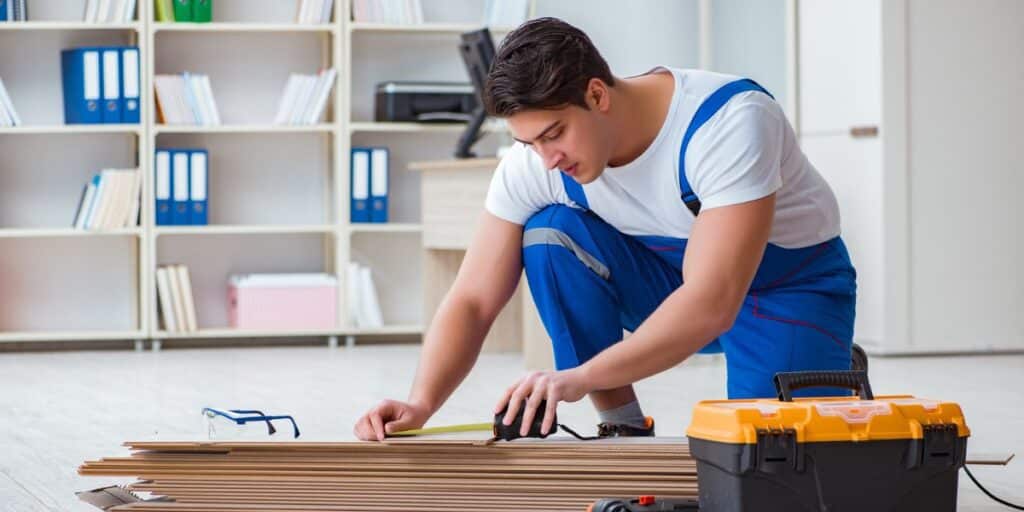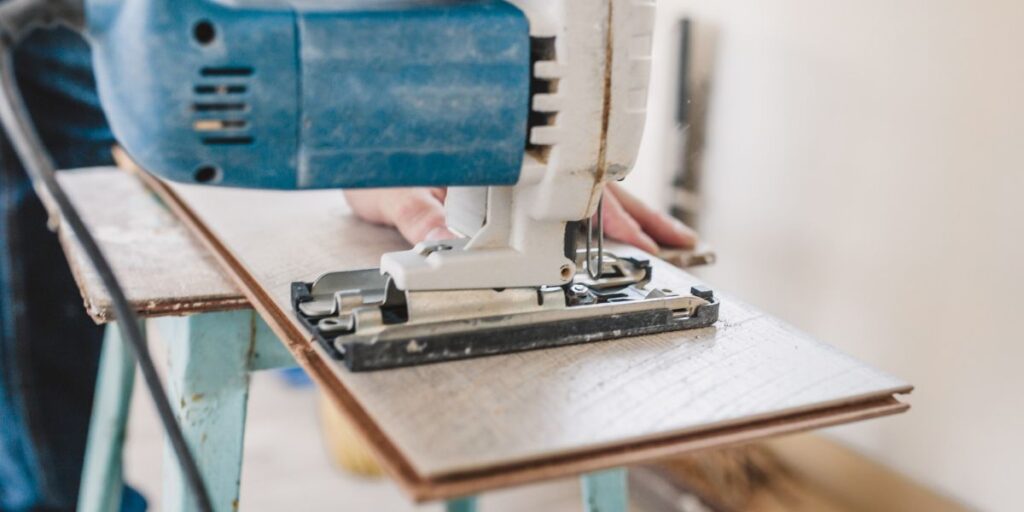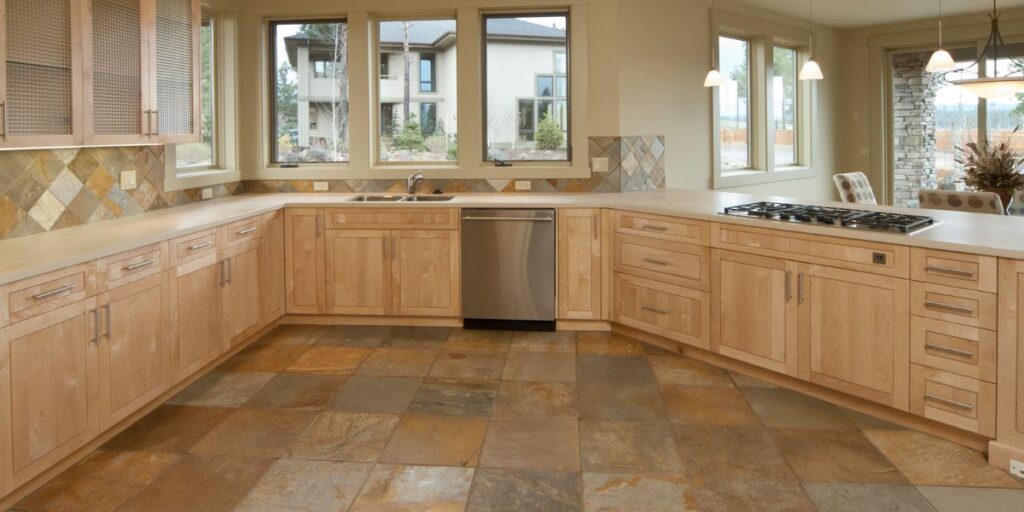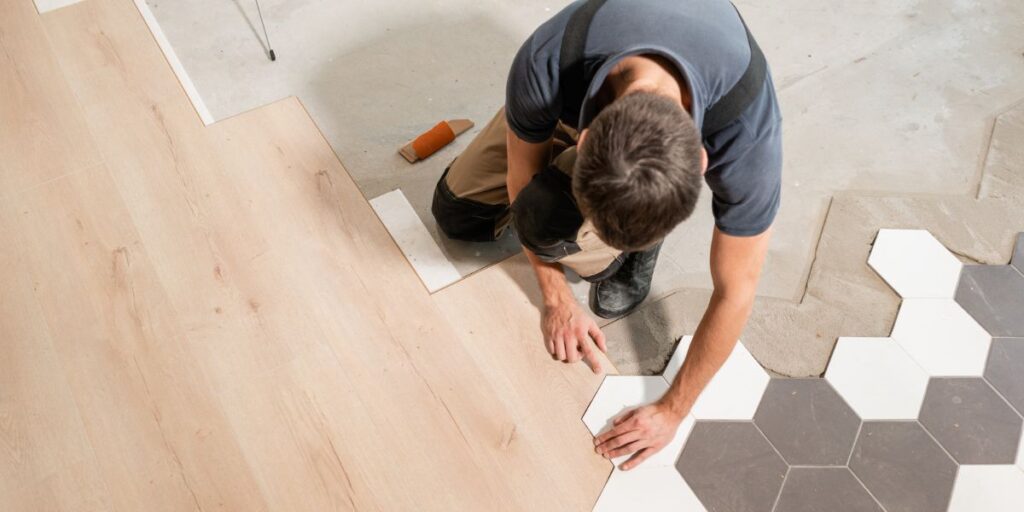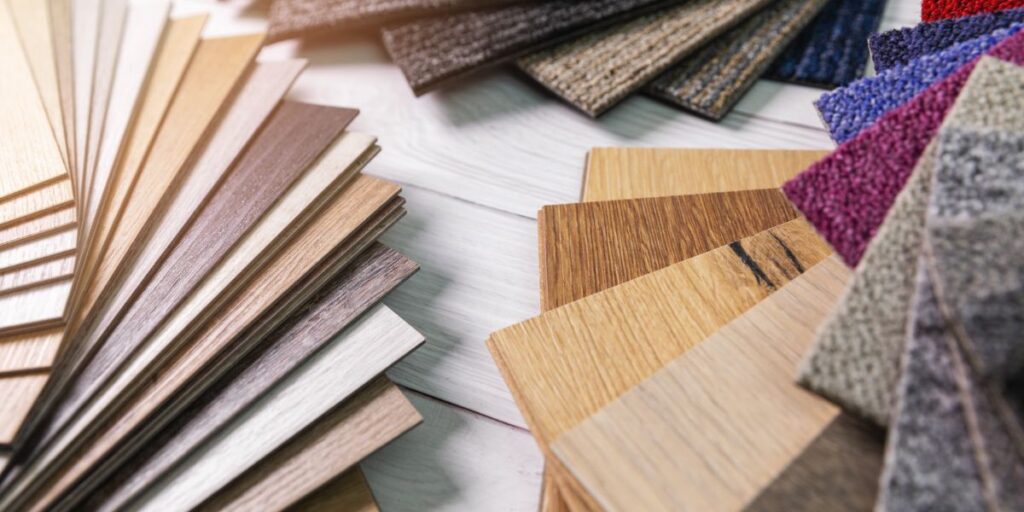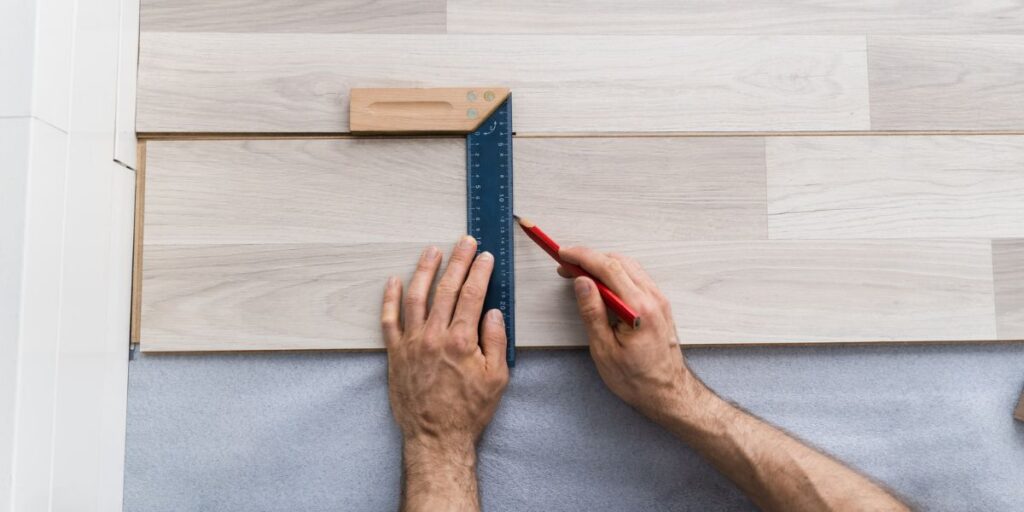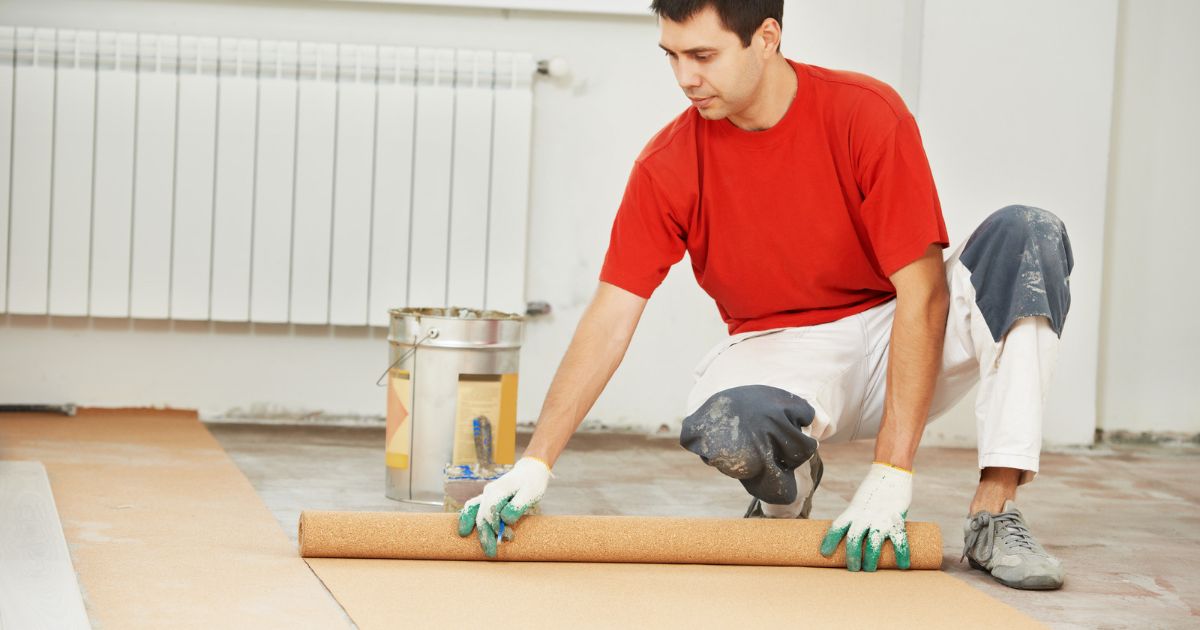
Removing Glued Down Laminate Flooring: A Comprehensive Guide
Introduction
Laminate flooring is a popular choice for homeowners due to its affordability and durability. However, when it comes to removing glued-down laminate flooring, things can get tricky. Many people make the mistake of attempting to rip up the flooring without proper preparation, which can result in damage to the subfloor and make the removal process even more difficult.
In this article, we’ll provide you with a comprehensive guide on how to remove glued-down laminate flooring properly. No matter if you’re a DIY enthusiast or a professional contractor, following these steps will save you time, money, and frustration.
Explanation of glued-down laminate flooring
Glued-down laminate flooring refers to planks or tiles that are adhered directly onto the subfloor using an adhesive. This type of installation is common for both residential and commercial spaces. Typically, glue-down laminate is used in areas with high foot traffic such as hallways and entryways.
While this type of installation provides durability and stability over time, it can be a nightmare when it’s time for removal. Glue-down installations require more effort than floating floors since they’re stuck directly onto the subfloor surface.
RELATED: Which Way Should Vinyl Plank Flooring Run in a Hallway?
Importance of removing it properly
It’s essential to remove glued-down laminate flooring properly because doing so incorrectly can result in costly repairs or even injury. When attempting to forcefully remove glued-down laminate without proper preparation or techniques, there’s a higher chance that you’ll damage your subfloors. Aside from possible damage to your underlying floors or yourself during the process, poorly done removal work could also negatively affect future renovation plans, such as installing new floors.
Overview of How to Remove Glued Down Laminate Flooring
Before diving into any home improvement project involving floor removals, especially one involving glue-down laminates, ensure that you gather all the necessary tools and materials. You will need a pry bar, scraper, gloves, safety glasses or goggles, respirator mask for dust protection in case the adhesive used is an irritant, solvent if necessary and one thing that cannot be overemphasized; patience. The process itself involves loosening or removing the laminate flooring from one corner to another using a pry bar or scraper.
If facing too much resistance at any point, it’s best to stop and re-evaluate your approach. Once all laminate flooring pieces have been removed, inspect the subfloor for any adhesive residue or damage.
Preparation
Gathering Necessary Tools and Materials
Removing glued-down laminate flooring is not an easy task, and it requires specific tools and materials to do it properly. You’ll need a pry bar or scraper to lift up the flooring, a hammer to help with the removal process, and safety goggles and gloves for protection.
Do not underestimate the importance of wearing protective gear when removing laminate flooring, as you never know what you might come across. Additionally, you will need a solvent for removing any adhesive residue that is left over after the floor has been removed.
It’s important to research which type of solvent is best for your specific type of glue to avoid damaging your subfloor. Don’t be cheap when purchasing these materials either; investing in high-quality tools and materials will make the entire process easier, faster, and more efficient.
Clearing The Area
Before starting any work on removing glued-down laminate flooring, clear out all furniture from the room. Doing so will provide ample space to work in without damaging or causing any unnecessary accidents with surrounding items. If possible, remove baseboards along walls too so that you can easily access edges during the removal process.
Make sure there are no tripping hazards or obstructions in your pathway that could cause injury while working on the floor. Take this opportunity now to clean up any debris or dirt from around the edges of where you’ll be working; it’ll make for easier cleanup later on.
Protecting Surrounding Surfaces
Before starting the actual removal process of your glued down laminate flooring, take time to protect surrounding surfaces such as walls or cabinets from scratches or damage due to accidental slips with tools while working on the floor. Tape protective coverings like cardboard or heavy-duty plastic sheeting onto these surfaces using painter’s tape – this ensures they’ll stay in place without leaving any residue when removed. You may even want to consider covering vents or openings near the floor that could potentially suck up dust and debris created during the removal process.
Taking these extra steps may take a bit more time and effort, but it will save you time, money, and frustration in the long run. Trust me; being proactive now will only make things easier later on!
Initial Removal: Starting at a corner or edge
The importance of starting in the right place
When it comes to removing glued-down laminate flooring, starting in the correct spot is crucial. Do not begin in the middle of the room as this will make it more difficult to remove sections without damaging surrounding pieces. Instead, start at a corner or edge where the glue might not be as strong.
If you are working with tongue and groove laminate flooring, you will want to begin by cutting off the tongue of one row with a saw. This will allow you to lift up that row and access the glue underneath it.
Using a pry bar or scraper, gently lift up one side of that row and work to separate it from the subfloor. Once that row is removed, continue working your way across until all rows have been lifted.
The use of pry bars or scrapers
In order to remove glued-down laminate flooring, you’ll need some tools at your disposal. A pry bar and scraper are two essential items that can make the job much easier.
A pry bar can be used to gently lift up sections of laminate from one end while using a scraper to cut through any glue holding it down along the way. It’s important not to force anything during this process, as doing so can cause damage.
Scrapers come in various shapes and sizes depending on their intended use. The most common type used for removing flooring is a flat-blade scraper which can cut through adhesive residue left behind after removal.
Pulling up Laminate Flooring Sections
Once you have begun separating rows of laminate flooring from each other using either a pry bar or scraper, gently pull them up by hand if possible. If they do not come easily, use pliers and work slowly so as not to damage surrounding pieces.
It’s important also to remember to work from one side of the room to the other, carefully removing each section without causing damage to surrounding pieces. Remember, patience is key in this process and taking your time will result in a better end result.
Overall, initial removal of glued-down laminate flooring can be tedious and even frustrating at times. However, with the right tools and patience, it can be done successfully.
Dealing with Adhesive Residue
The Different Types of Adhesive Residue
Removing glued-down laminate flooring is no small task. Once you finally get the laminate off, there’s still that pesky adhesive residue to deal with.
This can come in several forms depending on the type of adhesive used during installation. Some adhesives are water-based and can be removed with warm water or a mild solvent.
Others are solvent-based and require a stronger solvent for removal. And then there’s the dreaded black mastic, which is notorious for being difficult to remove and can contain harmful chemicals like asbestos.
No matter what type of adhesive residue you’re dealing with, it’s important to take precautions when removing it. Wear protective gear like gloves, eye protection, and a mask to avoid inhaling any harmful fumes.
Methods for Removing Adhesive Residue
When it comes to removing adhesive residue, there are several methods you can try. One option is using a scraper or putty knife to gently scrape away the residue. This method works best for water-based adhesives or light amounts of residue.
For tougher residue, solvents like mineral spirits or acetone can be effective. Apply the solvent to a clean cloth and gently rub over the residue until it dissolves or loosens enough to scrape away.
If you’re dealing with black mastic or other stubborn types of adhesive residue, heat guns or dry ice may be necessary. Heat guns soften the adhesive before scraping, while dry ice freezes it making it easier to break up and remove.
The Importance of Wearing Protective Gear
Removing adhesive residue is not only messy but potentially hazardous as well. Depending on the type of glue used in your laminate flooring installation, you could be exposing yourself to harmful chemicals if you are not careful.
That’s why wearing protective gear like gloves and eye protection is crucial. Solvents used to remove adhesive residue can be harsh and cause skin irritation or chemical burns.
Inhaling fumes from these solvents can also be dangerous, so wearing a mask is highly recommended. Removing adhesive residue may take some patience and elbow grease, but it’s important to do it the right way.
Different types of adhesives require different methods for removal, so make sure you know what you’re dealing with before getting started. And always wear protective gear when handling chemicals to avoid any potential health risks.
Creative Solutions for Stubborn Adhesive Residue
Using Heat to Soften Adhesive
If the adhesive residue is stubborn and does not want to come off, use heat to soften it up. This technique works exceptionally well on old and dry adhesive. Heat softens the glue, making it easier to remove with a scraper or putty knife.
One of the most effective tools for this job is a heat gun or hair dryer. Point the heat gun at the area of adhesive residue and hold it there until you see the glue starting to melt.
Once it starts melting, use a scraper or putty knife to remove the softened glue. Do not overheat one area, as this could damage your floor.
Applying Dry Ice to Freeze Adhesive for Easier Removal
Another effective solution for stubborn adhesive residue is dry ice blasting. Dry ice blasting involves shooting compressed air with tiny pellets of dry ice at high speeds at the surface with an adhesive residue problem.
The extremely cold temperature of dry ice (-109°F) freezes and shrinks the glue into small pieces that can be easily removed by scraping or vacuuming them up. The process leaves no mess behind as dry ice turns into gas when it evaporates.
While using dry ice, be careful as it can cause frostbite if handled improperly. Always wear gloves when handling dry ice, protective eye gear, face masks, and ensure good ventilation in your workspace.
Rarely Known Small Details: Safety Precautions When Dealing With Adhesives
Proper Ventilation Is Key When Using Solvents or Heat Sources
When dealing with adhesives during flooring removal projects, always ensure proper ventilation in your workspace before starting work. Most solvents used in removing adhesives have strong fumes that can be dangerous when inhaled for long periods. Therefore, it is advisable to work in an open area or a room with powerful exhaust fans installed.
Always Wear Gloves and Eye Protection
Another essential safety precaution when removing glued-down laminate flooring is wearing protective gloves and eye gear. Gloves protect your hands from adhesive residue and other hazards that occur during the removal process.
Choose gloves made from nitrile or rubber, as they are the best for handling glue. Eye protection is also crucial when working with adhesives as it protects your eyes from fumes, dust, and particles that may fly off when you are scraping away at the floor.
RELATED: Waterproofing Laminate Flooring: The Ultimate Guide to Protect Your Floors
Final Steps: Cleaning, Inspecting, and Preparing for New Flooring
Cleaning the Subfloor Thoroughly After All Laminate Is Removed
After all laminate flooring has been removed from the subfloor, it’s time to clean up any remaining debris or adhesive residue. Begin by sweeping away debris using a broom and then vacuuming up any remaining material.
Once the debris is removed, use a solution of warm water mixed with vinegar to clean off any adhesive residue left behind. This solution helps dissolve any stubborn glue making them easier to remove.
Inspecting The Subfloor For Damage And Making Repairs If Necessary
Next, inspect your subfloor for damages such as cracks or uneven surfaces. If you find issues with your subfloor during the inspection, repair them before installing new flooring on top of it. Even small issues like tiny cracks can become significant problems after the installation of new flooring, which may lead to costly repairs in the future.
Preparing The Subfloor For New Flooring
After all cleaning and inspection is complete, prepare your subfloor for new flooring installation by leveling it out if necessary. Remove any bumps or rough spots that may cause unevenness in your finished floor.
Allow time for the subfloor to dry completely before installing your new flooring. Once dry, you can then install your new floor in the confidence that it will look and function optimally.
Frequently Asked Questions
Can glued flooring be removed?
Yes, glued flooring can be removed, but it can be labor-intensive. The method used depends on the type of flooring and the adhesive used.
What tool removes glued laminate flooring?
A power scraper or a floor scraper with a sharp blade is typically the most effective tool for removing glued laminate flooring. This tool helps to scrape and lift the flooring off the subfloor.
How do you remove glued laminate from concrete?
To remove glued laminate from concrete, you can use a heat gun or a floor adhesive remover to soften the adhesive. Then, carefully pry and scrape the laminate using a floor scraper or putty knife.
How do you remove glued laminate from plywood?
Removing glued laminate from plywood involves similar steps as removing it from concrete. Use a heat gun or adhesive remover to soften the glue, and then gently pry and scrape the laminate off the plywood surface using a floor scraper or putty knife.
What is the easiest way to remove glued flooring?
The easiest way to remove glued flooring depends on the specific circumstances. Using heat to soften the adhesive, along with a floor scraper or putty knife, can make the process easier. However, it is recommended to consult professional advice or follow the manufacturer’s instructions for the best approach.
What tool removes glued-down flooring?
A power scraper or floor scraper with a sharp blade is a commonly used tool for removing glued-down flooring. This tool helps to effectively scrape and lift the flooring from the subfloor, making the removal process more efficient.
Conclusion
Removing glued-down laminate flooring is not an easy task, but with patience and perseverance, it can be done. It is important to follow the correct steps to ensure safe removal of all adhesive residue. Proper protective gear and ventilation are crucial for safety purposes.
Take time during the inspection of your subfloor to fix any damages found before installing new flooring on it. With all these tips in mind, you can safely remove glued-down laminate flooring from your house without damaging the subfloor or endangering yourself during the process.
RESOURCE: Occupational Safety and Health Administration (OSHA): Cleaning Industry Safety and Health

